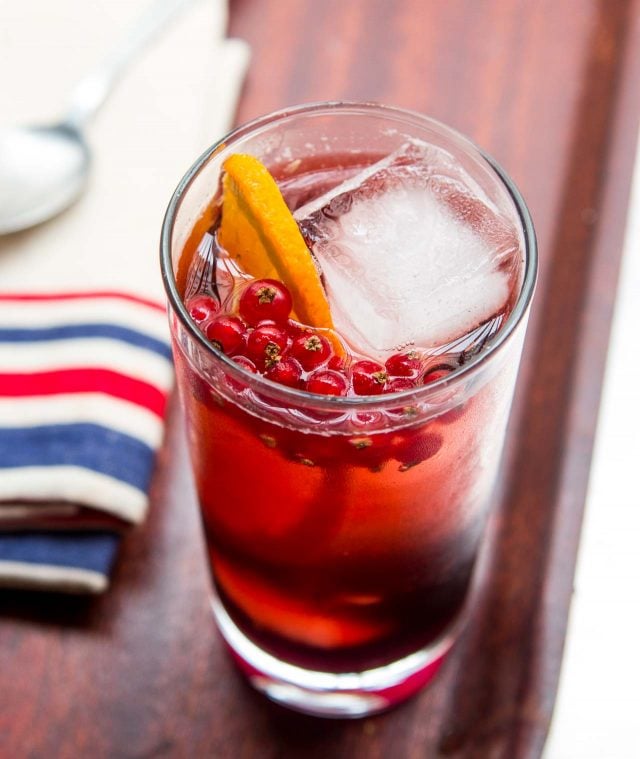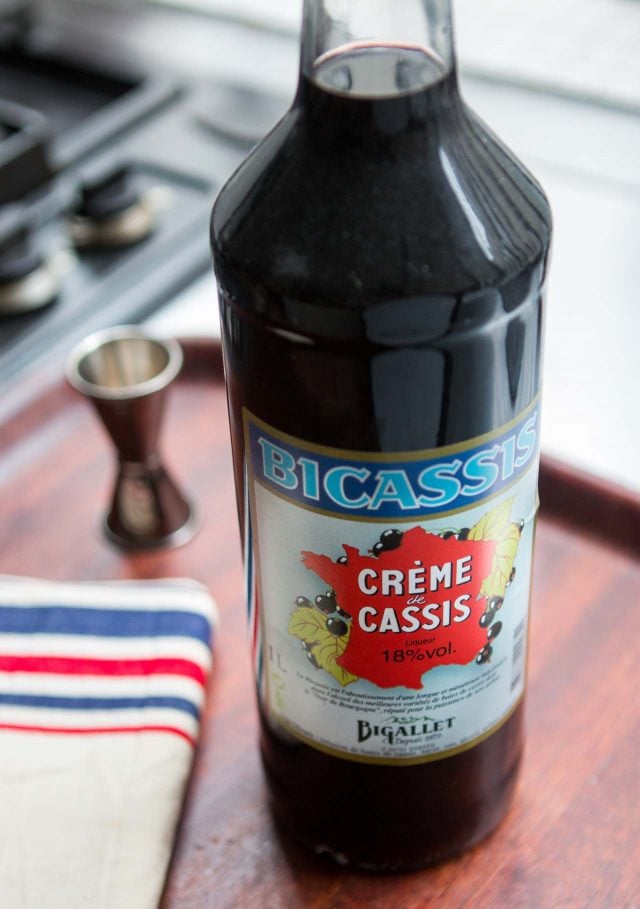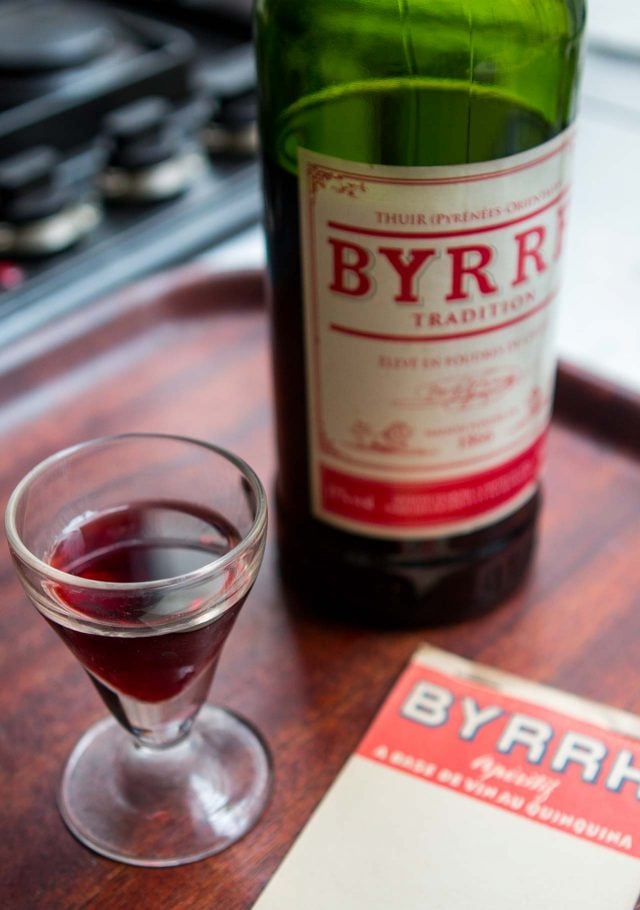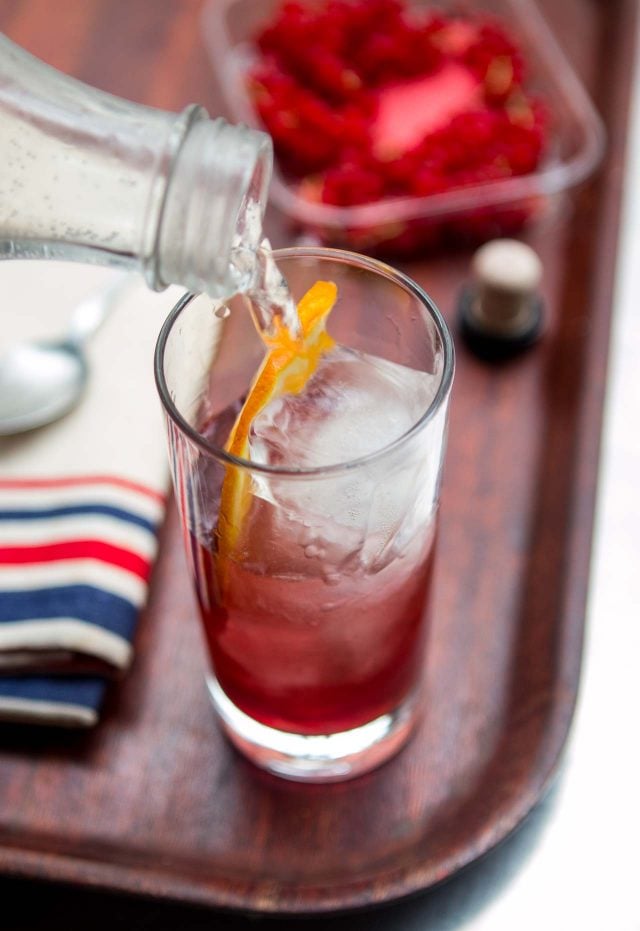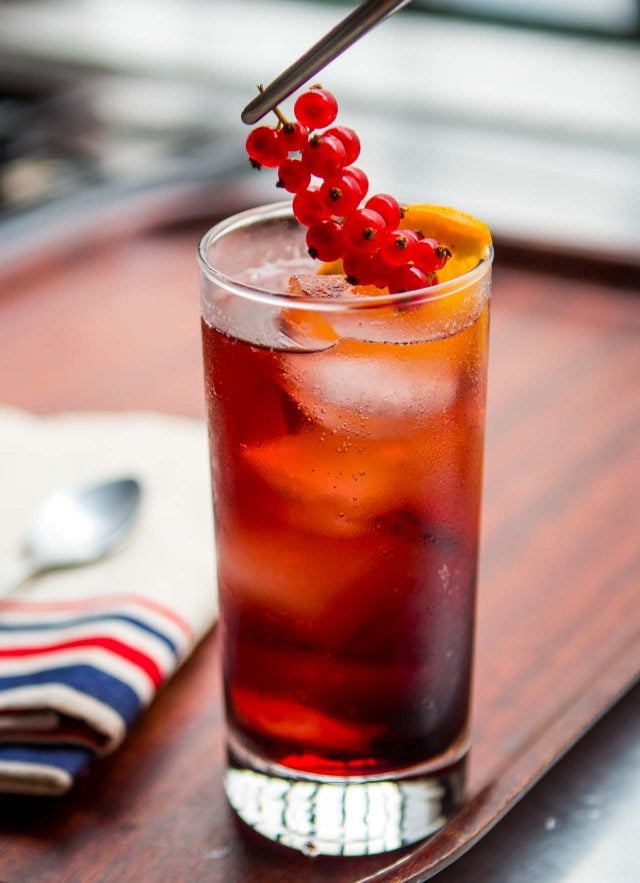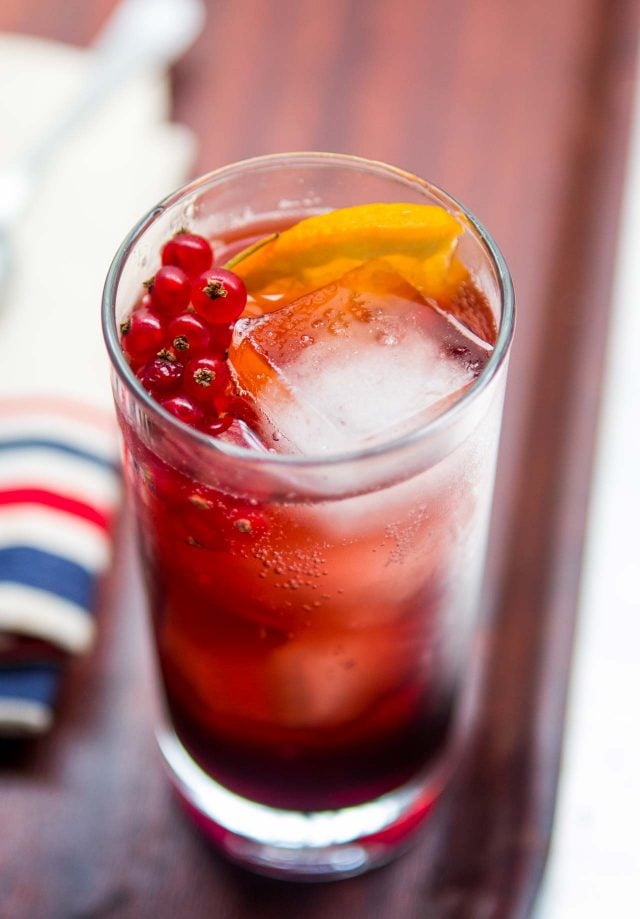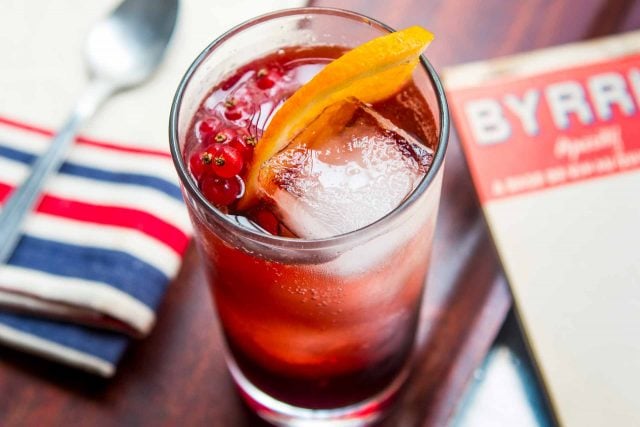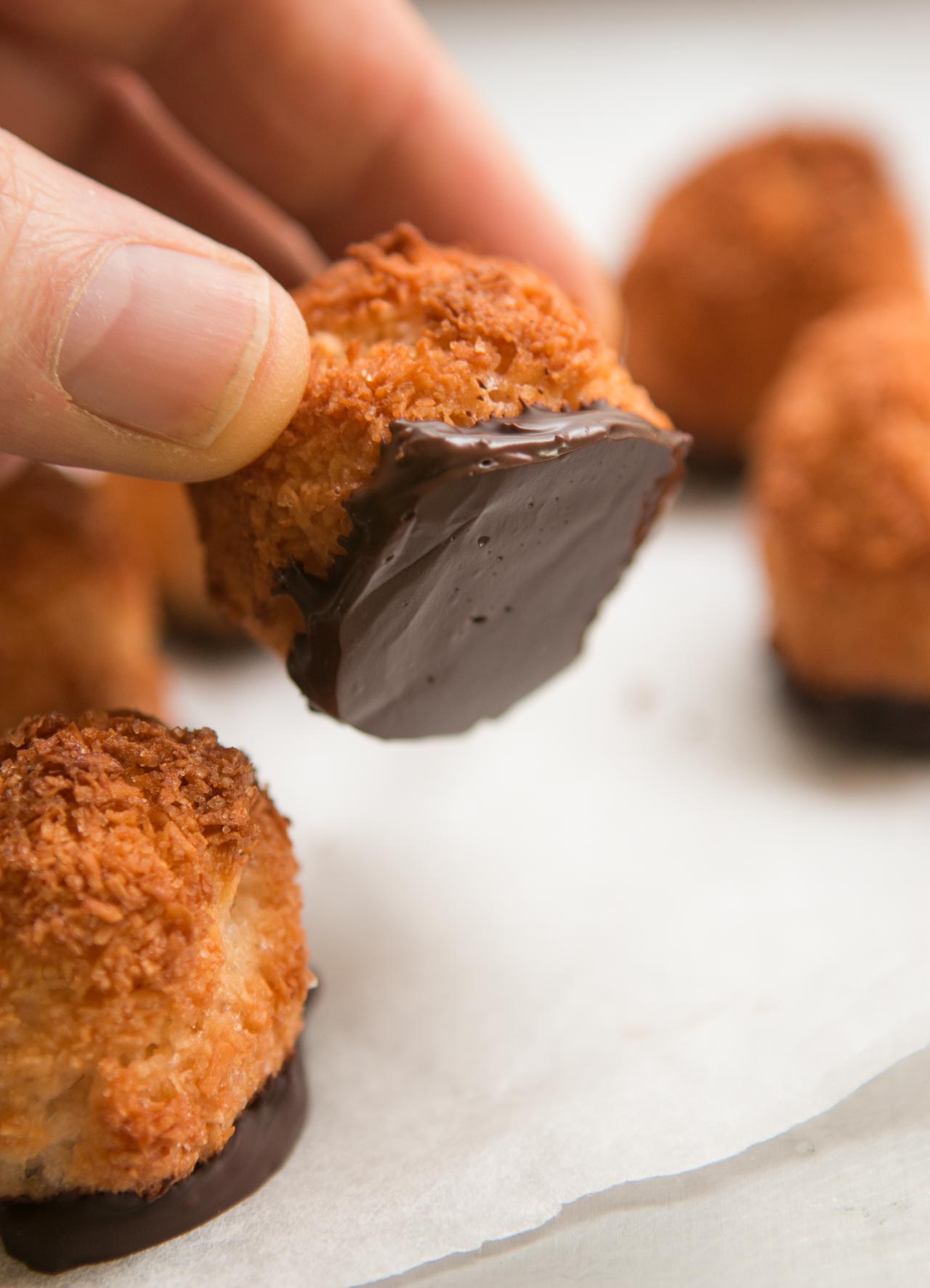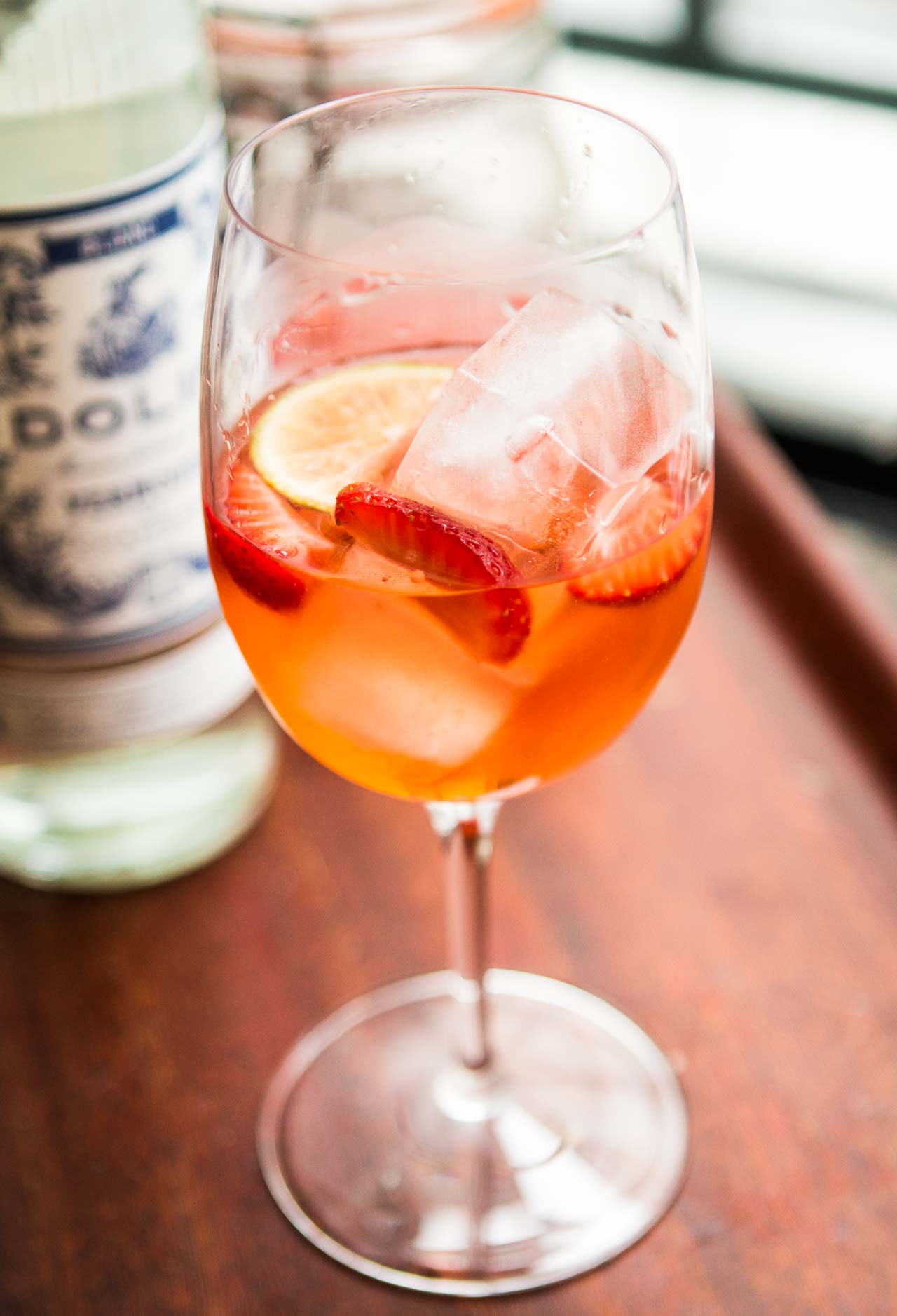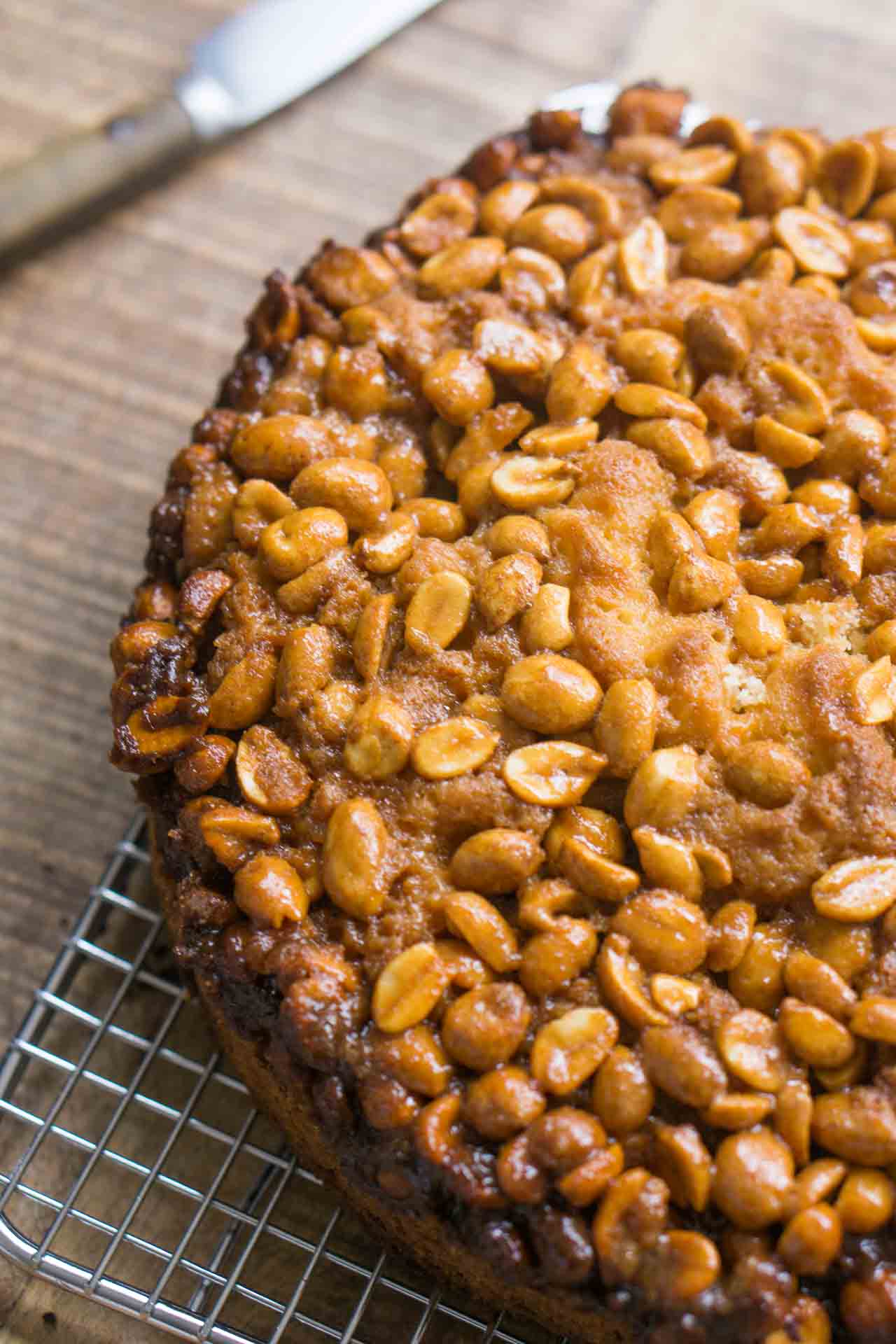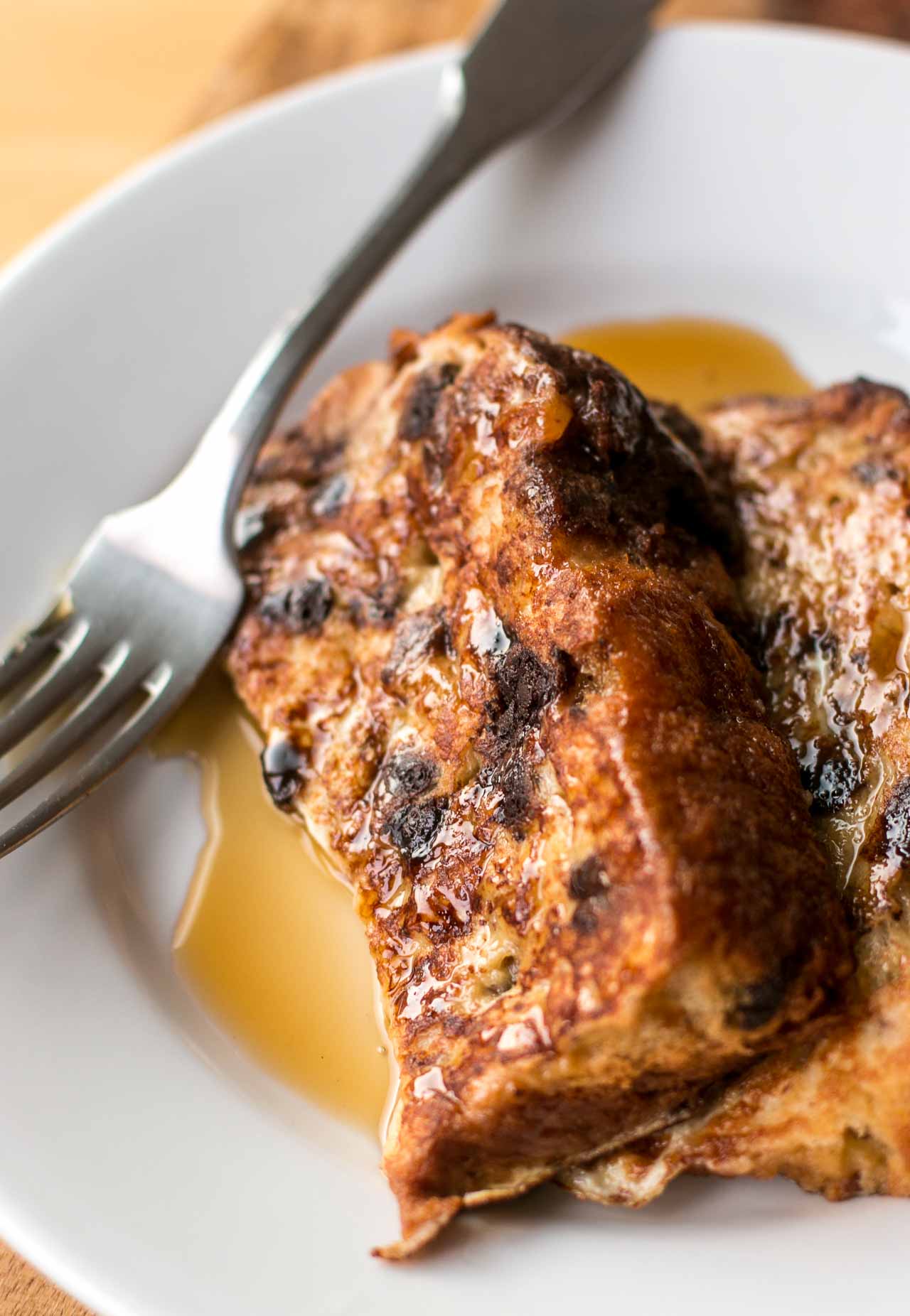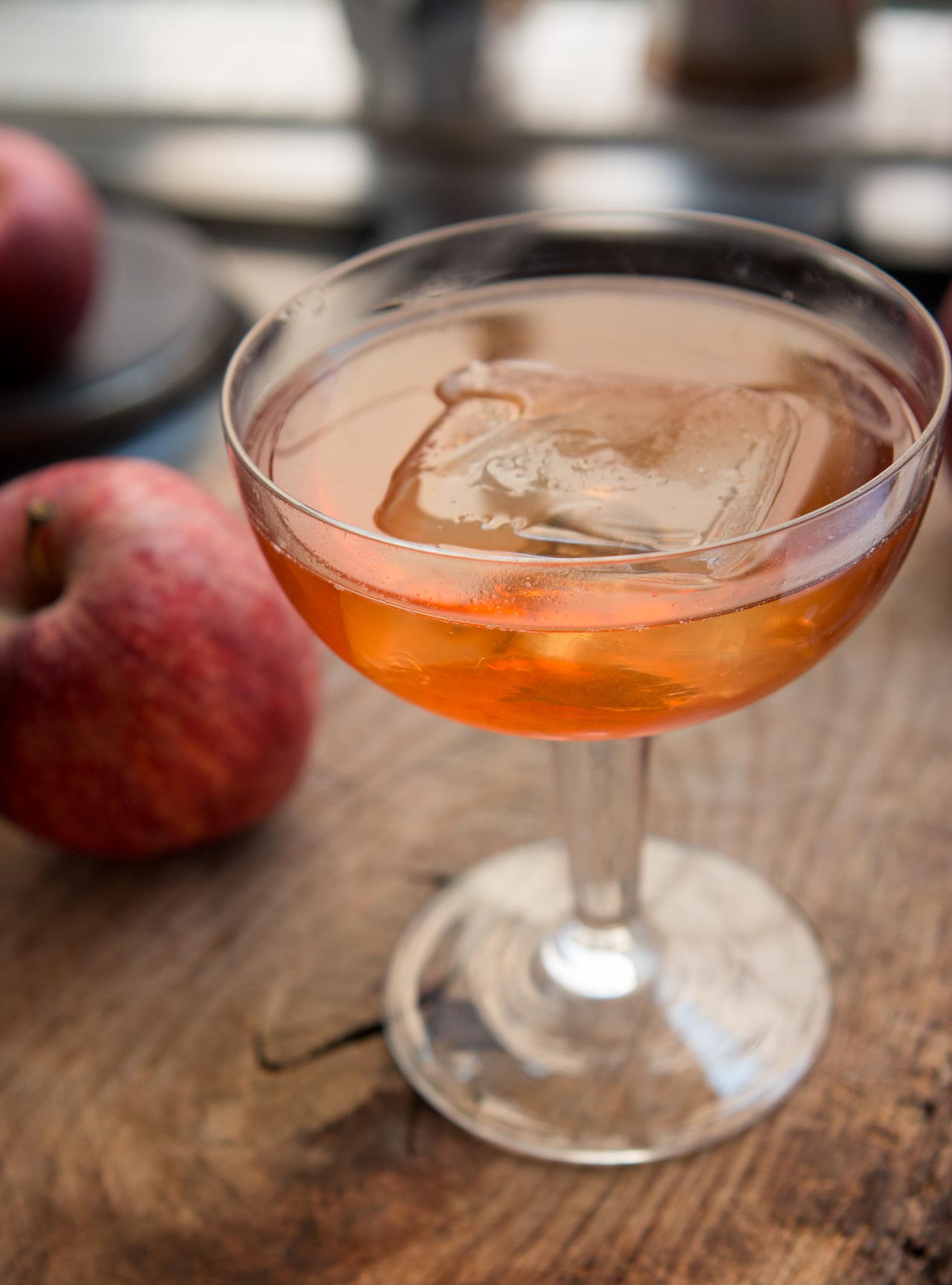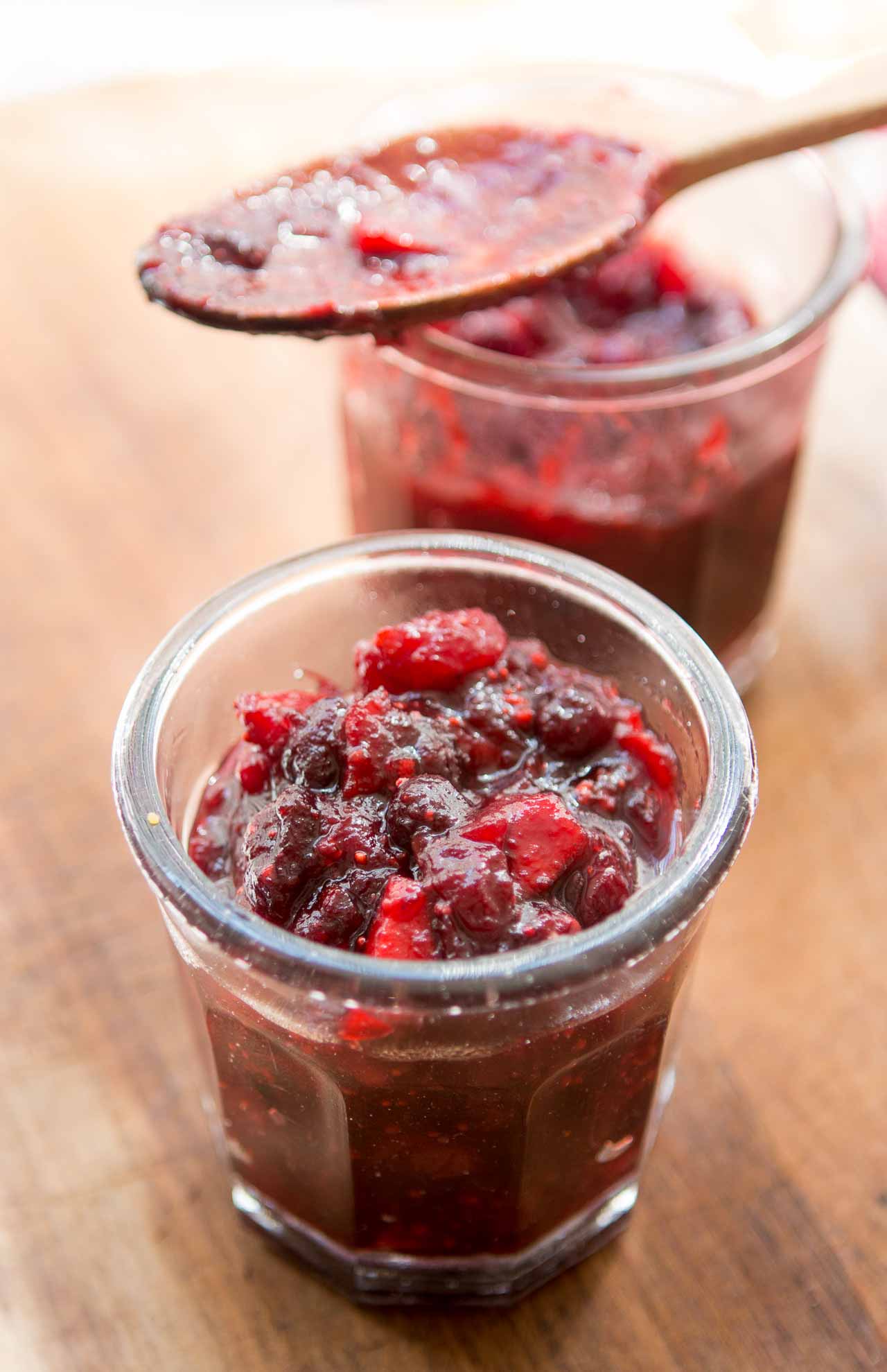Byrrh Cassis Aperitif
We spent part of our summer vacation in the Languedoc-Roussillon. The region is famous for its wines, especially the reds and rosé (which we sampled – generously…), while it was once the most popular apéritif in the world, selling over 30 million bottles annually, Byrrh is also made in the region but nowadays less well-known. In fact, if you order a Byrrh in France, more often than not, you might be brought a glass of bière, unless your ear for French is pretty good as it’s pronunciation is close to ‘beer.’ (I once had to point it out on the menu at a wine bar in Paris, as the waiter had no idea what I was talking about.) There’s no beer in Byrrh, but there’s plenty of flavor in this iconic French apéritif.
Fortunately it’s available in the U.S. and elsewhere outside of France. The company was wise enough to rebrand it in vintage-type bottles, which are labeled Byrrh Grand Quinquina and based on the original recipe. Byrrh (shown below) Tradition is what you’ll find in France nine times out of ten, unless you go to a well-stocked cocktail bar. True, Byrrh Grand Quinquina has more finesse and is dryer than the Tradition, which is fruitier, but I appreciate both for their differences – which is a nice way to see things, isn’t it?
I dug deeper into the history of Byrrh in Drinking French, which was invented by two brothers who had a fabric store and were looking for a way to make more money, so concocted a health tonic. But the local pharmacists (i.e.; the competition) weren’t amused by what the company’s website currently refers to as the brother’s belle aventure, or beautiful journey, and brought a lawsuit against the frères, who had to stop saying their “health tonic” had quinine in it.
Byrrh is having a resurgence thanks to the craft cocktail movement and an interest in apéritifs oubliés or “forgotten” French apéritifs. It’s one of those ingredients that offers up flavors of ruby grapes, bitter quinine, juicy fruits, and hints of cocoa and walnuts, which bolsters any drink that it’s added to, as well as making it a pleasant apéritif on its own, served over ice with an orange twist or slice.
Remarkably, it also pairs well with mezcal. (Haus Alpenz, the distributor in the United States, recommends mixing 1 1/2 ounces Byrrh with 1/2 ounce mezcal, topped with grapefruit juice and sparkling water, served over ice.) Byrrh leans a little toward the fruity side, but the gentle bite of the quinine bark keeps it decidedly adults-only.
It’s easy to fall into the Spritz habit and make that your default sparkling apéritif. Don’t get me wrong, I like the Spritz a lot, and it’s cousins the Negroni Sbagliato…and this Strawberry Spritz, but it’s fun to mix things up and try something new every once in a while, isn’t it?
Byrrh Cassis
- 1 1/2 ounces Byrrh
- 3/4 ounce crème de cassis
- 3 1/2 ounces sparkling water
- 1/2 orange wheel
- a few berries, if desired
- Pour the Byrrh and crème de cassis into a Collins glass or tumbler. Add the sparkling water and stir briefly.
- Add a generous amount of ice cubes and garnish with orange and berries, if desired.
